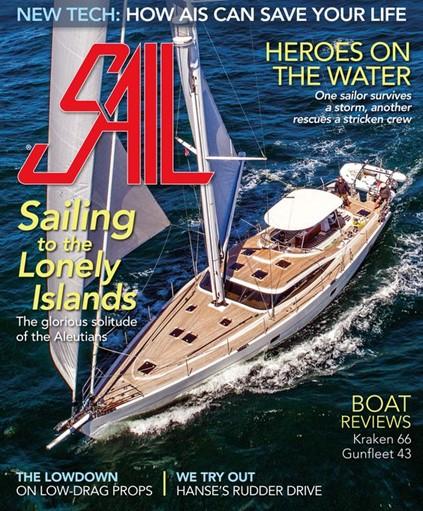Discover an in-depth exploration of the Oyster 495, a 50 foot bluewater cruiser meticulously designed with a deep appreciation for its heritage and a relentless pursuit of perfection. Join Zuzana Prochazka as she highlights the smooth and tranquil sailing experience, emphasizing the ease of handling and the 495's ability to gracefully navigate varying wind conditions.
Southern California was serving up a strong dose of its May Grey/June Gloom weather when I arrived in Santa Barbara. With a thick marine layer and cool temperatures, the breeze was light and the seas were flat. I had arrived to test the Oyster 495, a new model from a family of cruisers I’ve held up as ideal true bluewater boats for as long as I can remember.
To my surprise, it was hull No. 1, which had cruised the Mediterranean last summer as Carpe Diem. She had been shipped halfway around the world to her new owner, Rob, who renamed her Genevieve after his granddaughter. Rob’s aim was to find a boat he could singlehand along coastal jaunts, and he bought her without ever setting foot aboard. Given how easily he could manage the sails, he seemed happy with his choice.
The Oyster 495 is a from-the-keel-up new design and an ode to Oyster’s roots. It fully embraces proven offshore sensibilities and is a near replica of her bigger siblings. The design sticks unapologetically to a winning formula of stuff that works.
“At the end of the day, it’s a small Oyster, but it’s got to give you the feel of a big Oyster,” said Chris Lock, the 495’s design lead, in a promotional video about the boat.
Richard Matthews, Oyster’s original founder, helped head up the boat’s planning and development and noted the company’s “legacy of the other sub-50-footers…we felt it was time that Oyster got back into a boat of under 50 feet, but one that brought up to date the modern thinking on what an Oyster yacht should be…a truly bluewater, liveaboard, ocean-going yacht.”
Over the past five decades, boat design has evolved into a greater focus on convenience and sprawling spaces, but some of these modern concepts that look great at a boat show aren’t so practical offshore. That’s where Oyster shines with watertight bulkheads, high cockpit coamings, pre-rigged preventer lines, deck dorades, generous tankage, a low center of gravity, and copious deck stowage. These are the building blocks of a practical cruiser meant for bluewater work.
To bring this boat to market, Oyster implemented a new production process in a new manufacturing space in Hythe on England’s south coast. Construction features include a solid laminate, heavily reinforced, below the waterline as well as in the keel and forward areas of the hull. The structure combines composite stringers and frames for strength, and topsides and deck have closed-cell foam cores for strength and insulation; on deck, this is reinforced with plywood in higher load areas.
Discover the latest news from Oyster


